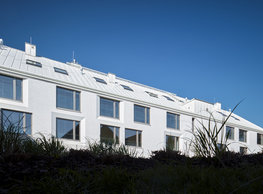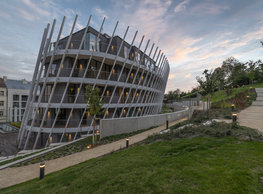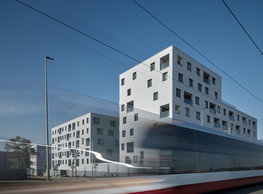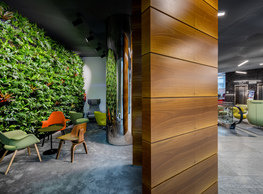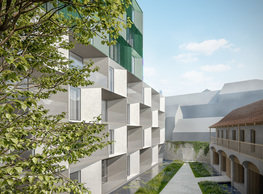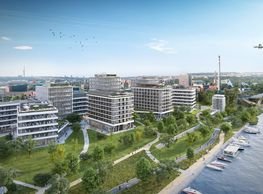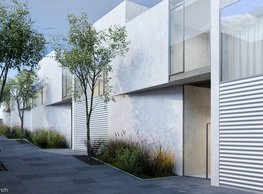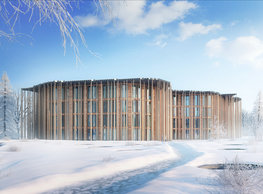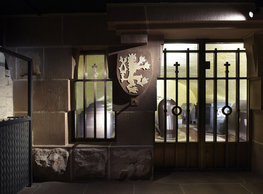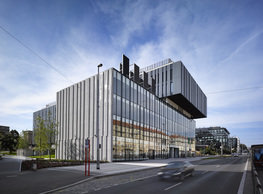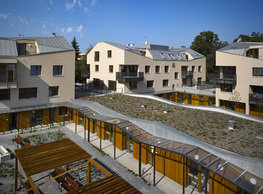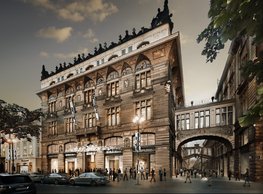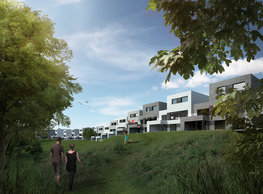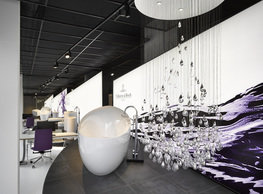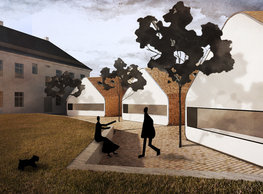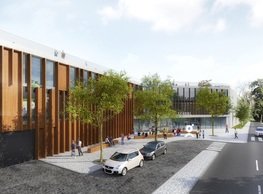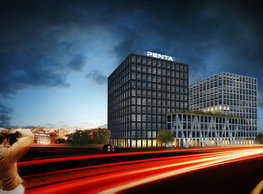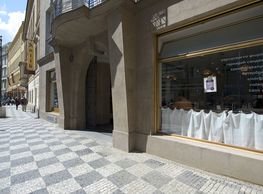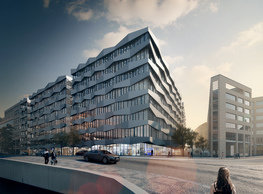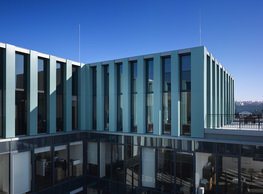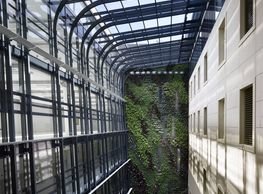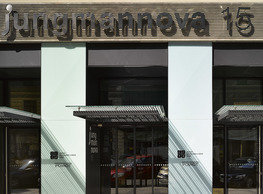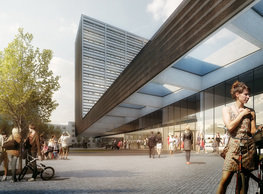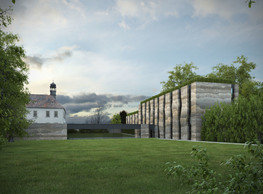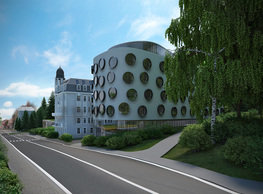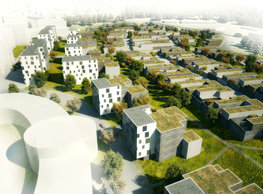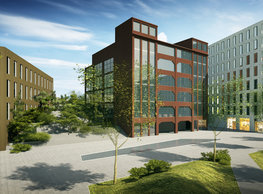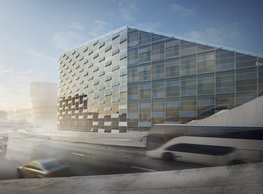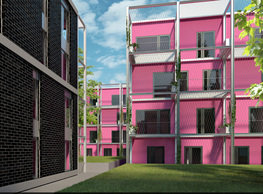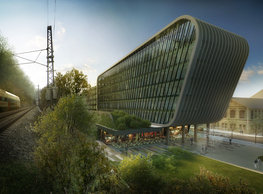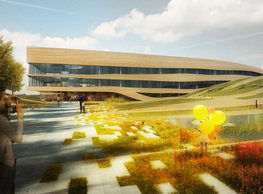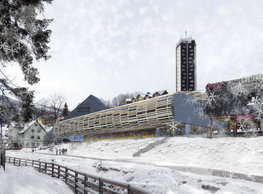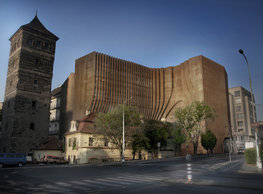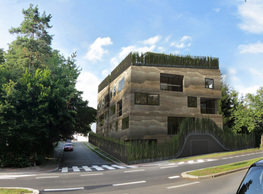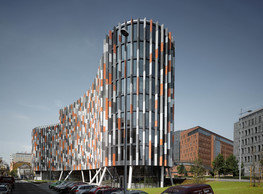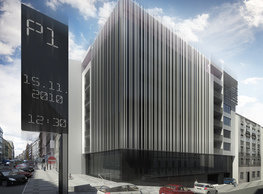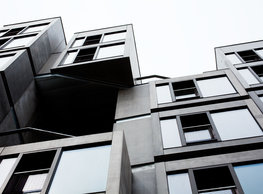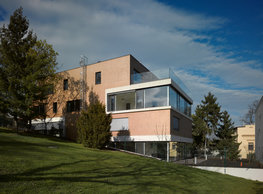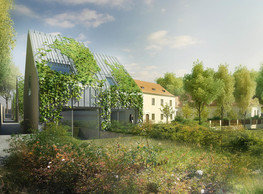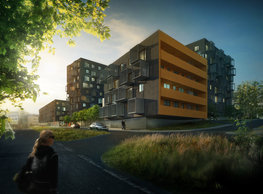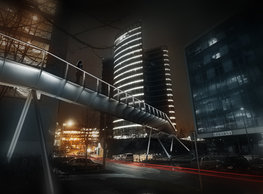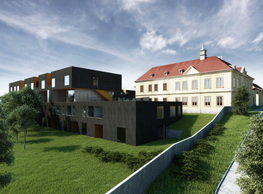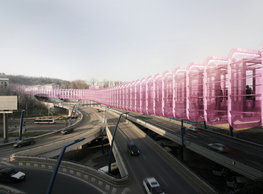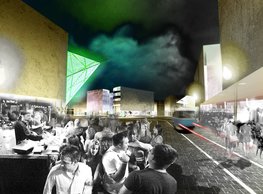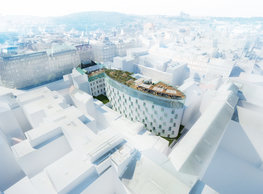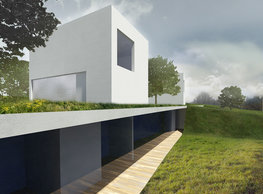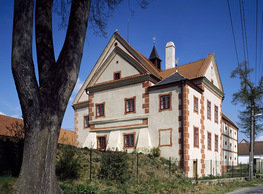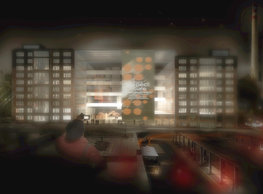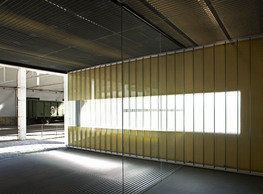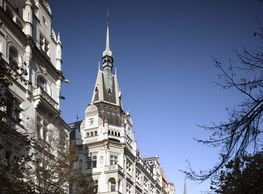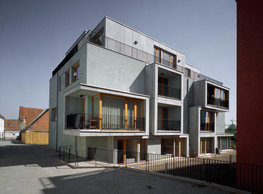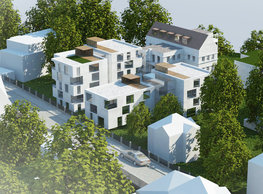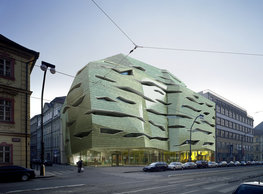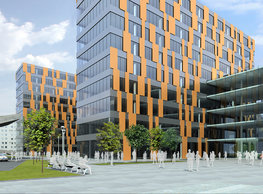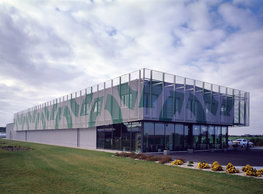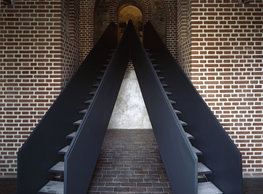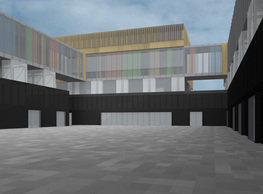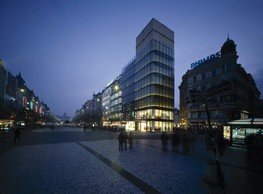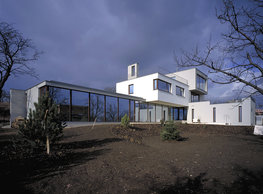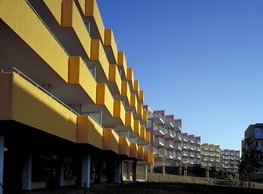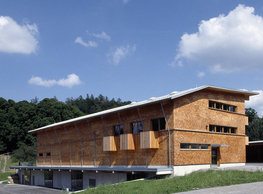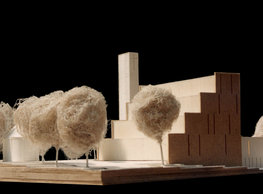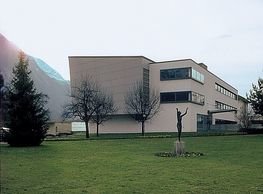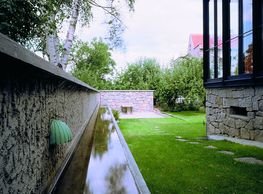Our solution connects the school and nature in the tightest possible way. It benefits from the proximity to the forest, the sloping site, and the area's character on the edge of the newly settled urban area. By peeling the vegetation surface away and transferring it onto the roof of the ground floor, we have created two complementary worlds. The school's world of the common areas interacting with the city at the streetscape level and the world of learning, movement, and nature above. We then connect the two in several places. But the obvious centre of gravity of the educational adventure is at the top, in its own universe, where nature is a touch close. Regarding the location of the proposed building on the site, our design's main principle is to elevate the originally sloping ground to the level of the horizontally roofed plinth - the building's ground floor. Circular lighting openings are cut into this plinth, otherwise entirely covered by a green roof. Only then do the masses of the classrooms land on the green surface of the perforated carpet. The lower one is dedicated to the primary, the higher one, with three floors, to the second school. The third player in the mass composition of the superstructure is the volume of the gymnasiums. Given its large volume, this block is set into the upper part of the slope so that it is presented to the surroundings only by a low illuminating "lantern" of the perimeter strip (clerestory) window under the roof. Finally, the horizontal roofing of the gym halls establishes another level of the green carpet. In this case, the green also functions as an outdoor sports field, for which a flat ground would otherwise be difficult to find in the sloping site. The main intention is to maximise the green carpet area of the school garden. That is also why the two classroom boxes are positioned onto the carpet to project over its northern and western edges. Furthermore, we enhanced the juxtaposition of the plinth and the cubic masses, aside from the protrusion mentioned above, by mutually rotating them. That is because each classroom box abuts a different direction of the adjacent street. This arrangement generates a desirable tension between the masses while establishing something of a funnel marking the position of the main entrance into the school complex. Other results of the chosen massing are also the clear visibility and identifiability of the school building given by its protrusion above the public space, right up to the very edge of the site. Finally, it also establishes an opposition to the composition of the masses of the neighbouring apartment buildings to the west of the site. These blocks of flats are also positioned above the plinth (containing the car parks), but always in a way where the volumes with the flats are set behind the edge of the plinth. The Komořany school does precisely the opposite.
portfolio
![]()
monastery of st. gabriel
![]()
nová zbrojovka block g
![]()
nad krocínkou a
![]()
nad krocínkou b
![]()
dobřichovice farmstead
![]()
nymburk train station
![]()
stará boleslav primary school
![]()
holečkova 26 residence
![]()
komořany elementary school
![]()
kindergarten jeseniova
![]()
nová elektra residence
![]()
filadelfie bldg. – the new reception
![]()
písnice elementary school
![]()
bytové domy vítězná/újezd
![]()
afi vokovice
![]()
showroom elite bath/bulthaup sk
![]()
port 7
![]()
main point pankrác
![]()
oktáva houses
![]()
lesy čr headquarters
![]()
royal tomb
![]()
the blox
![]()
dob centre in dobřichovice
![]()
contemporary glass muzeum
![]()
pod hády brno
![]()
elite bath showroom karlín
![]()
communal flats in dolní břežany
![]()
šantovka residence
![]()
open gate II
![]()
ružinov office building
![]()
dlouhá palace
![]()
vinohradská 8
![]()
masarykovo railway station
![]()
retail and office development
![]()
jindřišská 16
![]()
jungmannova 15
![]()
regina hradec králové
![]()
chateau dolní břežany
![]()
the metropole hotel in mariánské lázně (marienbad)
![]()
waltrovka
![]()
square mechanica
![]()
porto mercandini
![]()
plzeňská 18
![]()
vrchlického residence
![]()
karlín railway
![]()
science research centre
![]()
sněžka apartment house
![]()
novomlýnská brána
![]()
jeremenkova residence
![]()
main point karlin
![]()
flat b3 prague
![]()
štěpánská 47
![]()
tenement house with a gym
![]()
švédská residence
![]()
hendlův dvůr
![]()
klamovka residential complex
![]()
botanica vidoule phase 6
![]()
footbridge in bb centre
![]()
perníkářka manor
![]()
municipal interventions prague 2010
![]()
černá louka ostrava
![]()
evropa hotel
![]()
bb centrum filadelfie
![]()
family houses in radotín
![]()
cherubín II
![]()
fc bohemians praha 1905
![]()
ostrolovský újezd chateau
![]()
zlín cultural centre
![]()
znojemská hospice
![]()
pilsner urquell
![]()
st. wenceslas exposition
![]()
institute of noblewomen
![]()
karlov office building
![]()
cherub I
![]()
pařížská 9
![]()
jinonice villa park
![]()
petynka hotel
![]()
sanopz residential complex
![]()
viktoria center pankrác
![]()
hotel crystal palace
![]()
invalidovna offices
![]()
performing arts center seoul
![]()
boscolo carlo IV hotel
![]()
toner recycling company building
![]()
the story of prague castle
![]()
umprum in prague-ďáblice
![]()
mrázovka apartment villa
![]()
school gym in prague-troja
![]()
roma hotel
![]()
euro palace
![]()
ten centuries of architecture
![]()
villa třešňovka
![]()
velká skála
![]()
sternberg palace prague castle
![]()
st. nicholas church in čečovice
![]()
olga and václav havel's villa
![]()
tierpark langenberg
![]()
a church in neratovice
![]()
school centre interlaken
![]()
forestry school in lyss
![]()
villa dobeška
![]()
tuscany in maps




